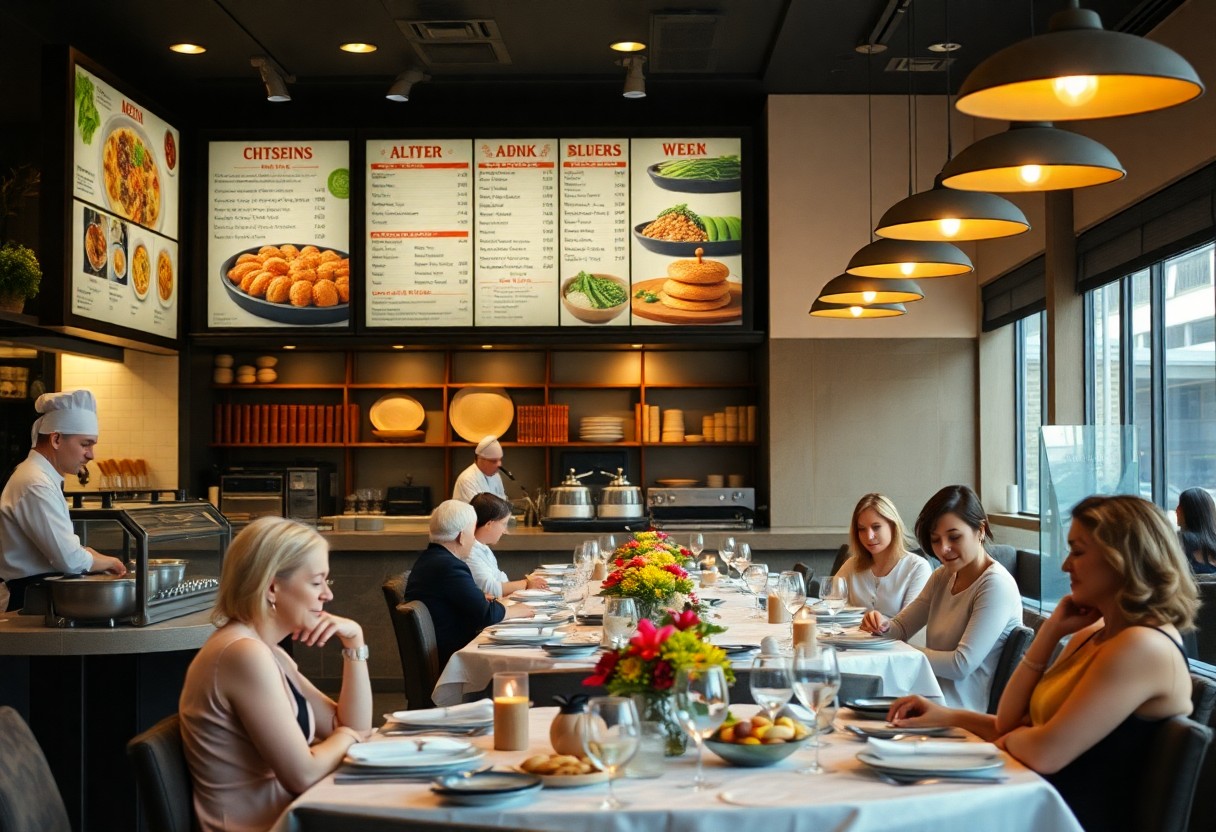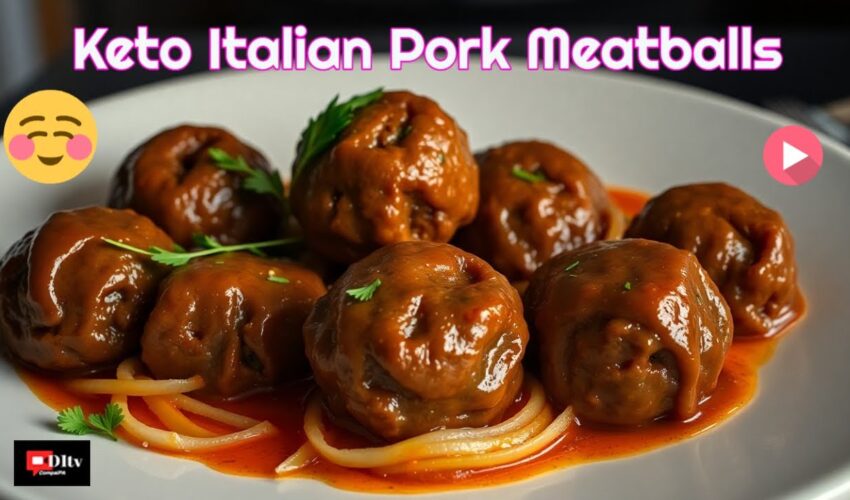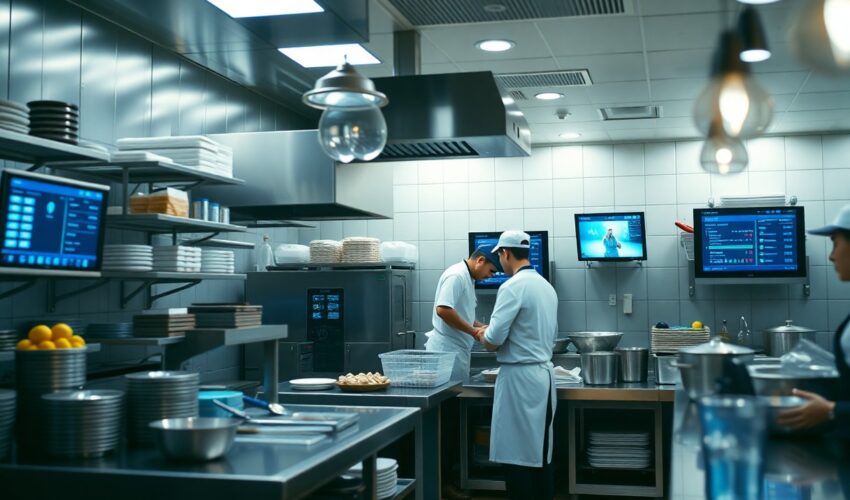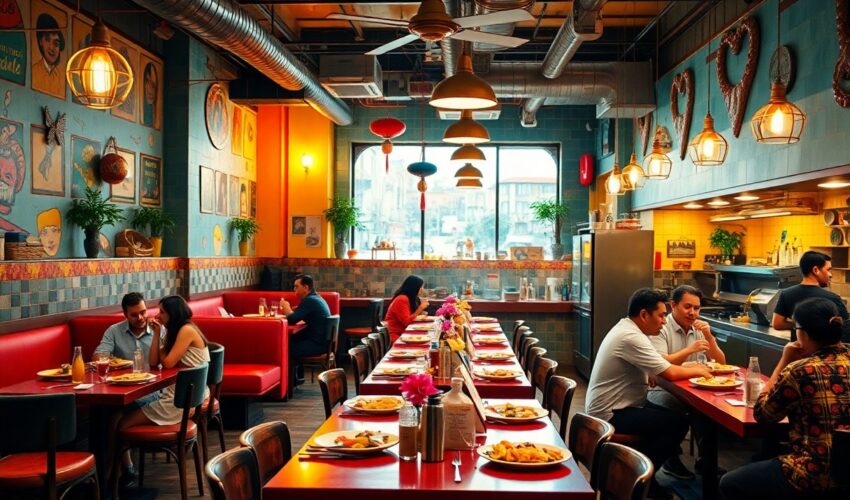Restaurant marketing is necessary for driving growth and maximizing profits in a competitive industry. As you navigate the ever-evolving landscape, it’s vital to understand how to effectively engage with your target audience and leverage the right strategies. From enhancing your online presence to creating compelling promotions, your approach to marketing can make the difference between success and stagnation. By focusing on innovative solutions tailored to your unique offerings, you can transform every meal served into a pathway for sustainable success.
Key Takeaways: Restaurant Marketing Strategy
- Develop a unique brand identity to differentiate your restaurant in a competitive market.
- Leverage social media platforms to engage with customers and build a loyal community.
- Utilize customer feedback to refine menu offerings and service for better satisfaction.
- Implement targeted promotions and loyalty programs to encourage repeat visits.
- Invest in local SEO practices to improve online visibility and attract nearby diners.
- Collaborate with local businesses to cross-promote and expand your reach.
- Analyze data to understand customer preferences and adapt restaurant marketing strategies accordingly.
Understanding Your Target Market: Restaurant Marketing Strategy
As you navigate the dynamic world of the restaurant industry, a profound awareness of your customer base serves as a cornerstone for your marketing efforts. Knowing who your customers are, what they want, and how they behave distinguishes successful restaurants from the rest. The first step in creating a successful restaurant marketing strategy is to define your target market, which includes demographic information such as age, income level, lifestyle, and even dining preferences. With a well-defined target audience, you can tailor your offerings, atmosphere, and communication effectively to resonate with the people most likely to dine in your establishment.
Identifying Customer Preferences
Above all, understanding customer preferences will empower you to make informed decisions about your menu, pricing, and promotions. Gather insights through surveys, social media engagement, and customer feedback to get a comprehensive view of what drives your patrons’ choices. Pay attention to seasonal trends, popular dishes, and even dietary restrictions. This information will guide you in curating a menu that not only satisfies but also delights them, enhancing their overall dining experience and fostering loyalty.

Analyzing Competitor Strategies
Against a backdrop of fierce competition, it’s imperative to keep an eye on what your rivals are doing. Examine their marketing tactics, menu diversity, pricing strategies, and customer engagement to identify both their strengths and weaknesses. This analysis will help you pinpoint market gaps that your restaurant can exploit, allowing you to position yourself effectively. Are competitors renowned for their quick service or extensive wine selection? Understanding these intricacies can provide you with actionable insights for elevating your own restaurant’s offerings.
Also, you can leverage tools such as mystery dining or online reviews to gain an understanding of not only what competitors are excelling at but also the pain points that customers experience. This approach will enable you to develop unique selling propositions that can set your restaurant apart. By providing exceptional service, innovative menu items, or unique dining experiences, you can effectively attract customers who are seeking alternatives to what is currently available in the market.
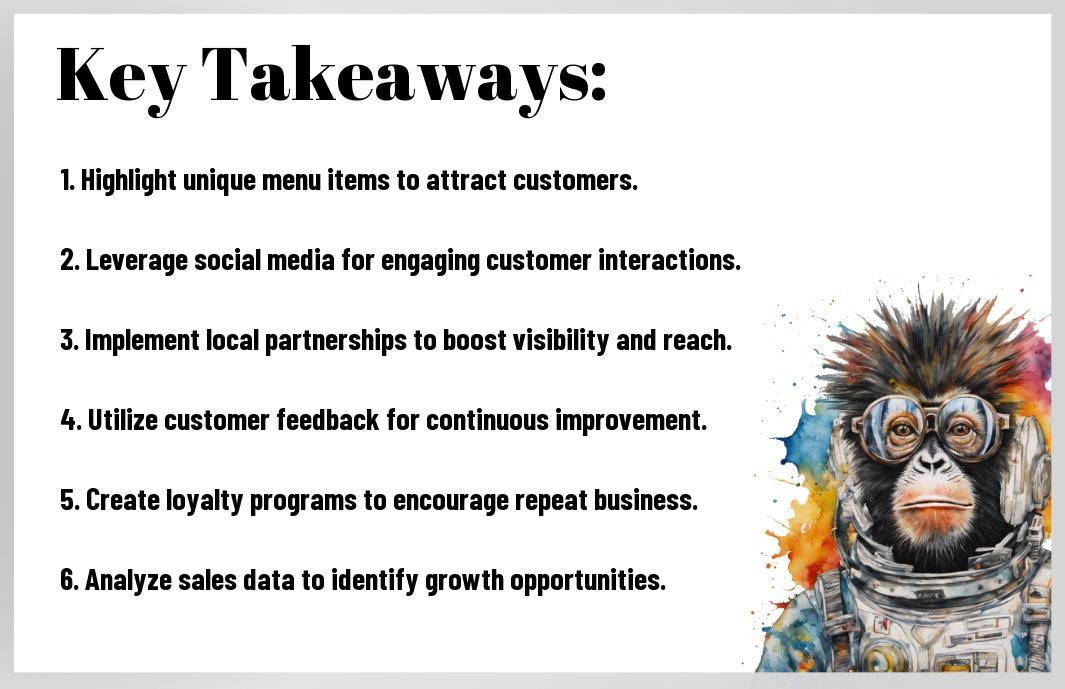
Crafting a Unique Value Proposition: Restaurant Marketing Strategy
Now more than ever, establishing a unique value proposition (UVP) is necessary for the growth and sustainability of your restaurant. Your UVP articulates why customers should choose your dining experience over others. This pivotal element should precisely reflect your restaurant’s ambitions, mission, and the memorable experiences you offer. When you successfully define and market your UVP, you create a firm foundation upon which to build your restaurant marketing strategy and ultimately optimize your profits.
Defining Your Brand Identity
With a strong brand identity, your restaurant differentiates itself in an oversaturated market. Start by identifying the core values that drive your restaurant. These values should align with the experiences you offer, whether it’s a focus on locally-sourced ingredients, a commitment to sustainability, or an emphasis on gourmet innovation. Use these principles to shape your restaurant’s name, logo, and overall ambiance, ensuring that every element conveys your distinct personality. Think about the emotions you want to evoke in your guests; this insight will inform not only your brand identity but also the customer experience.
Differentiating from Competitors
Unique attributes set your restaurant apart from others in your area, and this differentiation is key to creating an enduring customer base. Identify what you offer that no one else does – perhaps it’s an exclusive menu item, a distinctive dining atmosphere, or exceptional service tailored to guests’ needs. Highlighting these unique offerings in your marketing materials demonstrates to potential customers that your restaurant stands out from the crowd.
Even as you explore how to differentiate from competitors, keep an eye on emerging trends and customer preferences. Your ability to adapt and evolve will not only enhance your UVP but will also keep your offerings aligned with what diners are actively seeking. Emphasizing aspects like unique recipes, signature cocktails, or a thematic ambiance can create a memorable experience that resonates with guests. Ensure your promotional strategies effectively communicate these unique features, as they can significantly influence customer decisions. Ultimately, the more distinct you become, the more likely you are to cultivate a loyal customer base that returns for what only you can provide.
Leveraging Digital Marketing: Restaurant Marketing Strategy
To thrive in the modern restaurant landscape, you must embrace digital marketing as a powerful tool for growth. A well-executed digital restaurant marketing strategy allows you to reach new customers, engage with your community, and ultimately drive more profits to your restaurant. By focusing on key areas such as your website and social media platforms, you can create a strong digital presence that attracts diners and keeps them coming back for more.
Building an Engaging Website
Across the restaurant industry, an engaging website serves as your digital storefront and a vital resource for potential diners. Your website should offer important information like your menu, location, hours of operation, and easy-to-use reservation or ordering systems. Incorporating high-quality images of your dishes can evoke strong cravings and encourage visitors to explore your offerings further. Additionally, including customer testimonials and reviews can enhance your credibility and showcase the experiences of previous guests.
Utilizing Social Media Platforms
Utilizing social media platforms is another effective means of enhancing your restaurant’s visibility and engagement with customers. Each platform presents unique opportunities for storytelling and interaction, so you should tailor your content to each one. For example, eye-catching photos and videos on platforms like Instagram can showcase your mouthwatering dishes, while engaging posts and updates on Facebook can help you build community connections and share special events. Utilizing these channels effectively allows you to humanize your brand and create strong emotional ties with your audience.
Consequently, maintaining an active presence on social media can lead to increased brand awareness and customer loyalty. You should focus on posting regularly, responding to customer inquiries promptly, and even running interactive campaigns like contests to engage your followers. Strong engagement leads to positive word-of-mouth marketing, and your followers will likely share their experiences, expanding your reach. By leveraging social media effectively, you transform casual diners into loyal patrons, ultimately driving growth and elevated profits for your restaurant.
Enhancing Customer Experience
Your restaurant’s success hinges not just on the food you serve but also on the entire experience you create for your guests. By focusing on elevating the customer experience, you can increase customer loyalty and encourage repeat visits. Engaging your clientele through every aspect of their visit—from the moment they walk in the door to the moment they leave—can lead to an unforgettable experience that they will eagerly share with friends and family.
Creating a Memorable Ambiance
About the ambiance of your restaurant, it’s more than just aesthetics. The music, lighting, and decor play an enormous role in shaping the overall mood and can elevate a meal to a special occasion. You want your guests to feel comfortable, welcomed, and inspired to return. Carefully consider the atmosphere that matches your restaurant’s theme and identity, whether it’s cozy and intimate or lively and vibrant. Small touches, such as fresh flowers on tables or unique artwork, can create a lasting impression and make your restaurant stand out.
Training Staff for Excellence
An enthusiastic and well-trained staff is paramount to delivering an exceptional customer experience. Your team is the face of your restaurant, and their interactions with customers can make a significant difference to your guests’ perception. Invest time in providing your employees with comprehensive training that covers not only menu items and service protocols but also customer engagement techniques. Encourage a culture of service excellence, where every team member feels empowered to go above and beyond for your guests.
Considering the impact of ongoing training and development for your staff can lead to remarkable results. Frequent workshops and role-playing scenarios can help your employees refine their communication skills and develop the ability to handle any situation with confidence. Fostering an environment where employees feel valued and recognized for their contributions leads to higher job satisfaction and retention rates, creating a positive ripple effect that resonates with customers and enhances the overall experience at your establishment.
Implementing Loyalty Programs
Keep in mind that loyalty programs are a powerful way to enhance customer retention and increase your restaurant’s profitability. By establishing a structured approach to rewarding your returning customers, you encourage them to regularly choose your establishment over competitors. A well-designed loyalty program not only boosts repeat visits but also cultivates a stronger emotional connection with your brand. This leads to the dual benefits of increased customer satisfaction and higher average spend per visit, ultimately contributing to your bottom line.
Reward Systems for Returning Customers
One of the most effective strategies you can adopt is a tiered reward system, which allows loyal customers to receive progressively greater benefits as they continue to engage with your restaurant. For instance, you could offer discounts or exclusive menu items after a certain number of visits, or accumulate points for every dollar spent that can be redeemed for future meals. This approach not only keeps your customers coming back but also increases their overall spending as they strive to reach the next reward level. By clearly communicating these milestones, you can create a sense of urgency and excitement around your loyalty program.
Tracking Customer Engagement
One key element in the success of your loyalty program is the ability to track customer engagement effectively. By monitoring customer interactions with your rewards system, you can identify patterns, preferences, and opportunities for improvement. Utilizing modern digital tools such as customer relationship management (CRM) software or loyalty apps can help you gather and analyze data on customer habits, allowing you to refine and personalize the program further. This intelligence not only enhances the customer experience but also provides invaluable insights into your program’s effectiveness.
Tracking customer engagement is important to optimizing your loyalty program and ensuring it meets the needs of your patrons. With effective tracking systems in place, you can observe how often customers participate in your loyalty offerings, identify who the most loyal customers are, and understand which rewards resonate best with your audience. This data empowers you to adapt your strategies in real-time, enabling you to maximize customer satisfaction and boost your restaurant’s profits by tailoring your rewards to match their preferences. By leveraging these insights, you can cultivate a loyal customer base and drive sustained growth for your business.
Collaborating with Local Businesses: Restaurant Marketing Strategy
Cross-Promotions and Events
Among the most effective ways to enhance your restaurant’s visibility is through cross-promotions with local businesses. Partnering with a nearby brewery, bakery, or farmer’s market can open avenues to co-host events or create exclusive menu items that feature local ingredients. Such collaborations not only attract new patrons but also demonstrate your commitment to supporting the community, which can significantly enhance your brand image. Make sure to leverage social media to promote these partnerships; sharing posts and stories can amplify your reach and entice more guests to experience what your restaurant has to offer.
Additionally, consider organizing special events that celebrate local culture or seasonal festivities in collaboration with your partners. These themed nights can provide a platform for live music, food tastings, or cooking demonstrations, turning an ordinary meal into a memorable occasion. Through thoughtful planning and execution, you can foster a sense of community around your restaurant and ensure attendees leave with a newfound loyalty to your brand.
Community Engagement Initiatives
About investing in community engagement initiatives, you’ll find ample opportunities to build lasting connections with your patrons. Getting involved in local charities or sponsoring events can position your restaurant as a socially responsible entity, enhancing your reputation and attracting like-minded individuals to your establishment. Consider hosting fundraisers or donating a portion of your profits to local schools or shelters, which not only gives back but also creates a story your customers can feel good about supporting.
Collaborating with schools for educational programs, conducting workshops on healthy eating, or simply hosting local artist showcases are all excellent examples of community engagement initiatives. These efforts allow you to not only strengthen your ties within the community but can also bring your restaurant into the spotlight during local events and festivals, ultimately boosting your visibility. By actively participating in your community, you create a foundation of trust and appreciation that can help grow your customer base significantly.
15 Benefits of a Restaurant Marketing Strategy
-
Attracts More Customers
A targeted restaurant marketing strategy draws in both new and returning diners to increase foot traffic and online orders. -
Boosts Brand Awareness
Restaurant Marketing Strategy consistently across platforms puts your restaurant on the map—and in customers’ minds. -
Restaurant Marketing Strategy Drives Revenue Growth
More visibility = more sales. Promotions, specials, and loyalty programs drive increased spending. -
Restaurant Marketing Strategy Creates a Loyal Customer Base
With the right strategy, you build emotional connections that turn one-time visitors into repeat customers. -
Restaurant Marketing Strategy Maximizes ROI on Ad Spend
A smart strategy ensures every marketing dollar works harder for your restaurant. -
Improves Online Presence
With digital restaurant marketing strategy (social media, SEO, email), your restaurant becomes easier to find and trust. -
Strengthens Brand Identity
A cohesive restaurant marketing plan communicates your restaurant’s vibe, values, and voice clearly and consistently. -
Restaurant Marketing Strategy Boosts Word-of-Mouth & Referrals
Encourages happy customers to spread the word, both online and in person. -
Restaurant Marketing Strategy Optimizes Menu Promotion
Highlighting popular or high-margin items can drive both interest and profitability. -
Restaurant Marketing Strategy Supports Seasonal and Event-Based Campaigns
Launch timely campaigns for holidays, events, or new menu rollouts with more impact. -
Restaurant Marketing Strategy Encourages Online Reviews & Social Proof
With the right strategy, you collect more positive reviews, improving your reputation and trust. -
Restaurant Marketing Strategy Enhances Customer Engagement
Through contests, polls, newsletters, and more, you build two-way conversations with your audience. -
Restaurant Marketing Strategy Provides Data for Smarter Decisions
Marketing analytics help you track what’s working and what needs to change—fast. -
Restaurant Marketing Strategy Outshines the Competition
A strategic approach helps your restaurant stand out in a crowded market with a unique brand position. -
Restaurant Marketing Strategy Builds Long-Term Business Sustainability
With consistent customer growth and engagement, you create a solid foundation for expansion and long-term success.
Summing up: Restaurant Marketing Strategy
Now that you have explored effective restaurant marketing strategies to drive growth, it’s time to put these insights into action. By focusing on defining your brand identity, leveraging social media, and creating engaging events, you can enhance your visibility and attract a loyal customer base. The key is to the evolving market dynamics, ensuring that your restaurant stands out in a competitive landscape.
Additionally, integrating customer feedback into your marketing efforts can provide valuable insights into what works and what doesn’t. As you embrace these strategies, you will not only elevate your restaurant’s profile but also significantly increase your profitability. By investing your time and resources into comprehensive marketing plans, you set the stage for sustainable growth and long-term success tailored specifically to your unique vision and goals.
FAQ
Q: What is ‘From Plate to Profits’ all about?
A: ‘From Plate to Profits’ is a comprehensive guide focused on elevating restaurant marketing strategy to foster growth and profitability. It integrates necessary marketing concepts with practical applications tailored specifically for the restaurant industry, aiming to help restaurateurs effectively reach their target audience and increase sales.
Q: What key concepts are covered in this post?
A: This post focuses on restaurant marketing strategies, including social media marketing, customer relationship management, branding, local SEO techniques, menu design optimization, and promotional campaigns. It ties these concepts to the unique challenges faced by restaurant owners to provide actionable insights and frameworks.
Q: How can a restaurant benefit from implementing these strategies?
A: By applying the strategies outlined in this post, restaurants can enhance their visibility and attract more customers. Effective marketing can lead to an increase in foot traffic, improved customer engagement, better online reviews, and ultimately, higher revenues. The focus on sustainable growth ensures that these benefits can extend over the long term.
Q: Is this guide suitable for new restaurant owners or established businesses?
A: Absolutely! ‘From Plate to Profits’ offers value for both new and established restaurant owners. For newcomers, it provides foundational restaurant marketing strategies to set them up for success. For experienced business owners, it offers fresh insights and strategies to rejuvenate their marketing efforts and expand their customer base.
Q: How does this post measure marketing success?
A: This post outlines various key performance indicators (KPIs) that restaurant owners can use to measure their marketing success. This includes tracking engagement metrics on social media, monitoring changes in customer foot traffic, analyzing sales data, and soliciting customer feedback. This data-driven approach helps in assessing the effectiveness of different strategies and refining them as needed.
Q: Can the strategies be adapted for different types of restaurants?
A: Yes, the concepts and strategies discussed in this post are flexible and can be tailored to suit various types of dining establishments, from fine dining to casual eateries and food trucks. This post emphasizes understanding one’s target market and adapting the marketing approach accordingly to maximize appeal and engagement.
Q: Can you help us write a blog post with an ultimate green base score above 80%?
A: Yes, we can. Contact us now!
This Post was Authored by Team D1tv CompaiPA


